How to add texture to your walls - a beginner's guide to the many beautiful plaster finishes
Indulge in a bit of textural healing and go rogue with your next decorating project – these are the wall finishes designers love
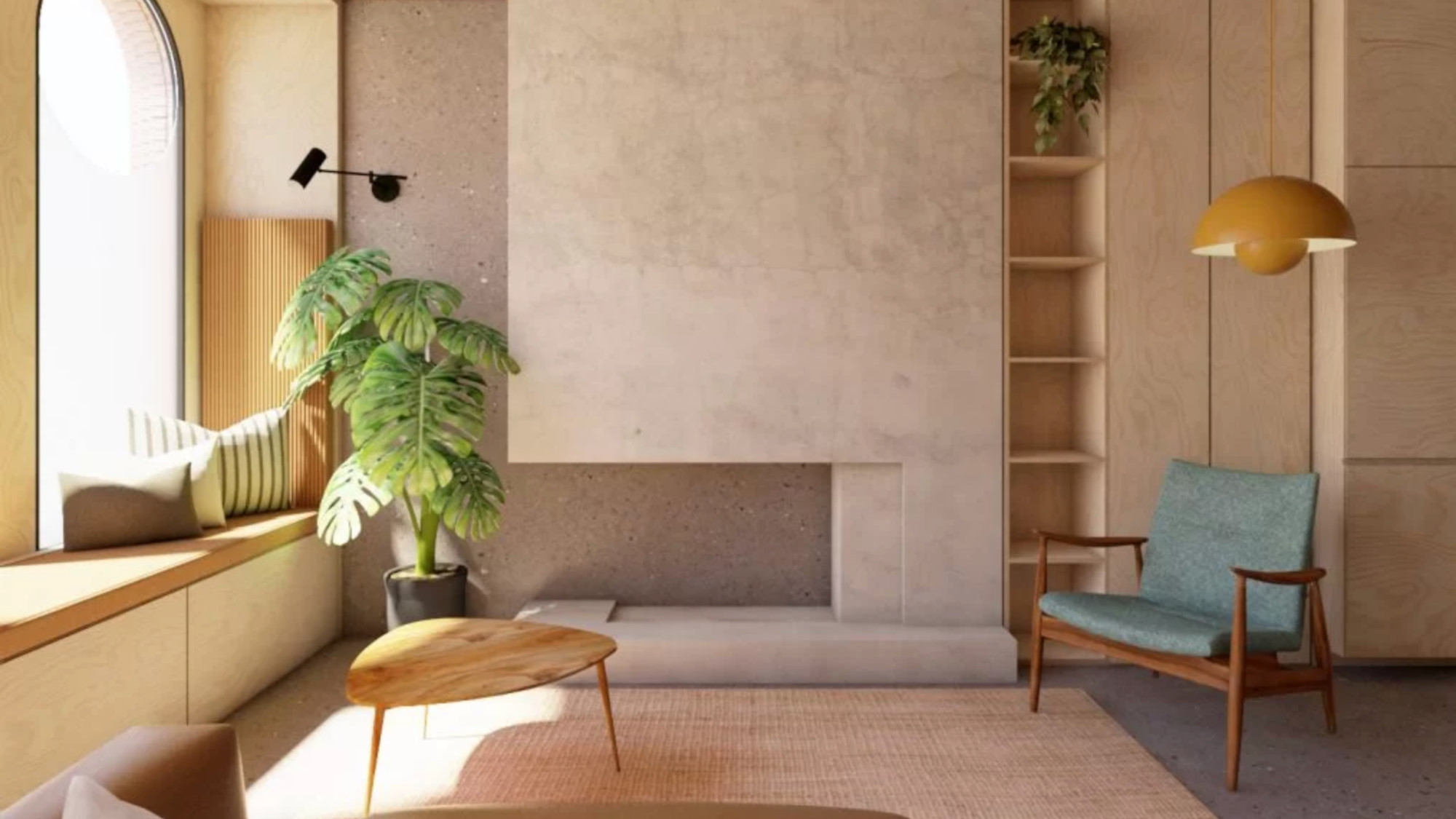

Scroll through your favorite interior designer’s feed or check out your local architect’s website: chances are you’ll notice a shift in how the experts are decorating walls these days. As the largest surface in a room, they’re a huge part of any scheme – and they’re ripe for exploiting as a way to bring more texture into a space. Texture, of course, means visual interest – so while a simple paint finish isn’t going anywhere, these days it pays to think creatively when you’re considering what to do with your walls. The experts are clear: if you’re still using classic matt paint in every room, you’re missing out on a whole world of textural delight.
‘Textured finishes allow the homeowner (or designer) to unleash their creativity by imagining a new environment and giving any room a more tactile appearance,’ says Alex Adducci, senior designer at 210 Design House. ‘Texture can bring drama and depth to the space and up the level of luxury, while also reflecting the homeowner's personal style. For example, grasscloth might give a feel of a tropical-inspired, relaxed environment while silk wallcovering adds luxe elegance.’
‘Utilizing different finishes can bring unique texture to a space — but by strategically using them in a design, it’s more about adding depth, color, and additional interest to shape a space,’ adds Emily Williams, head designer at Z Properties. ‘The fun part about these types of finishes is that they can be used in any room. For example, we’ve used wood tiles as a backdrop for a TV and wall-to-wall built-ins, and we’ve recently used fabric and nailheads to create a floor-to-ceiling bed wall with hidden doors.’
Ready to be convinced? We’ve rounded up the textured wall finishes to know now – and how to use them for a stylish finish.
How to add texture to your walls
1. Limewash paint
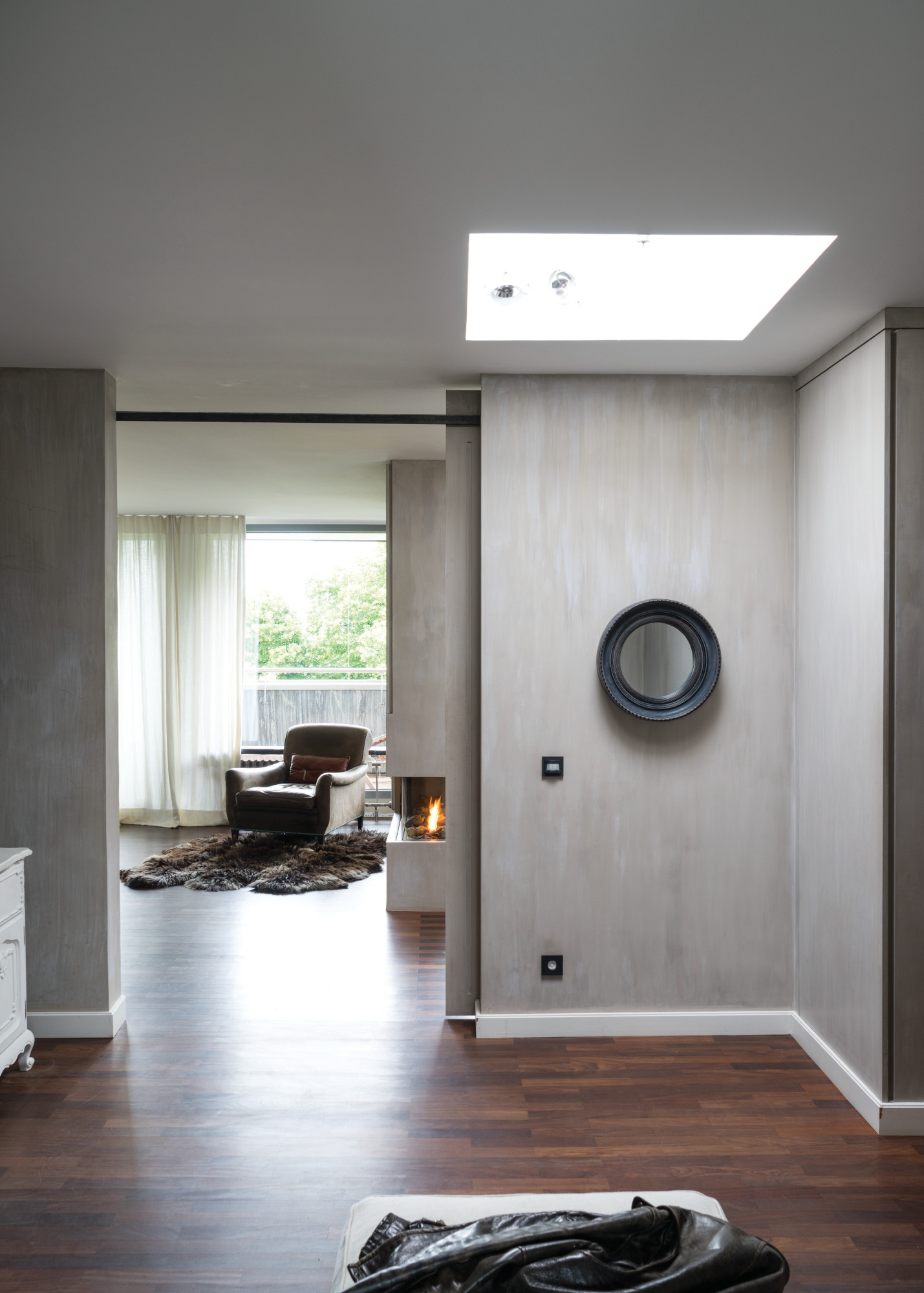
You’ve most likely seen limewash used externally, or in older properties – but that’s no reason not to consider it for contemporary interior schemes, too. ‘Limewash is a beautiful interior paint finish,’ says Farrow & Ball brand ambassador Patrick O’Donnell. ‘It also has good environmental credentials, ideal for anyone sensitive to some paint additives or with asthma. The effect of limewash on a wall is a gentle “broken” color which has to be built up in layers of application, creating a soft nuance of color.’
Made primarily from lime and water, limewash is popular in period homes because it’s breathable, which helps prevent damp. But don’t be put off by its historic association, adds Patrick: ‘It looks incredibly smart in a contemporary setting, too.’
Patrick recommends following the manufacturer’s guidelines when applying limewash – or even better, hire a professional decorator.
2. Grasscloth wallpaper
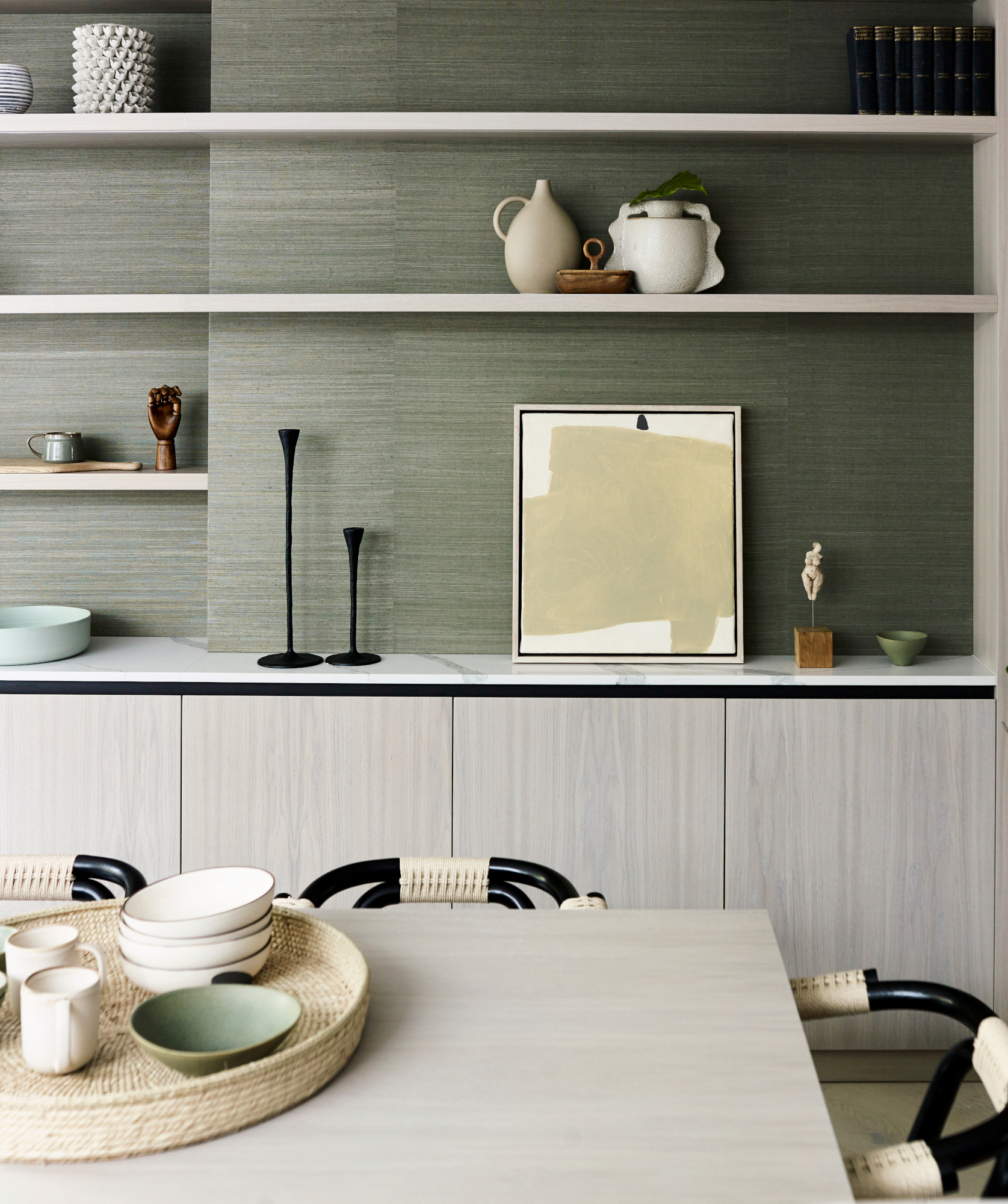
Wallpaper has always been an obvious candidate for bringing texture to walls, but the new cohort of designs is centred around one key style: grasscloth. Before you scroll on, cast off any associations you have of this design classic with 1960s and ‘70s style – grasscloth as a modern wallpaper idea is much cooler.
‘Grasscloth designs are a brilliant way to bring in textural detail,’ says Philippe Desart, managing director at Arte. ‘Whether coarsely or very finely woven, they give wallpaper depth and relief, produce strikingly bright, fresh colors, and provide practical benefits of strength and durability. Choose from plain designs that allow the materiality to be the focus and celebrate the natural beauty of grasscloth with all its imperfections, or opt for a patterned design that will deliver both texture and motif.’
Because grasscloth wallpaper has a more subtle texture, it’s perfect for adding interest without becoming the main feature. ‘Textured wallpapers are an easy way to deliver interest without overwhelming a space, allowing for the architectural details of a room to be the main focus and providing a harmonious background for the choice of furnishings,’ adds Philippe. ‘For a truly contemporary look, combine with modern, sculptural furniture, which will provide an interesting contrast with the layered feel of the walls.’
3. Plaster
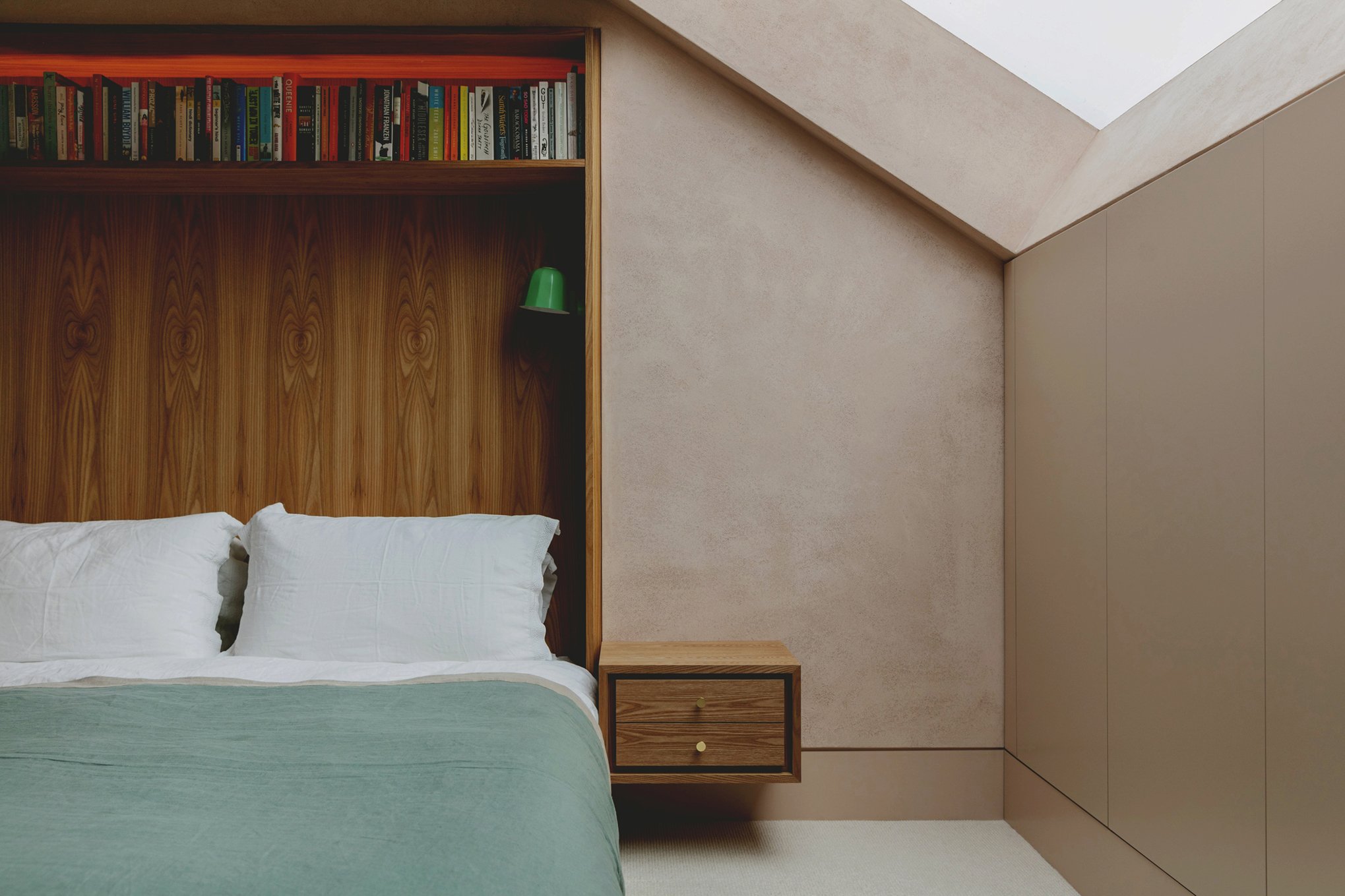
The quintessential wall finish for many an architectural project, plaster is cool, raw and contemporary – and versatile enough to be used in any scheme. Choosing which type you want can be tricky, however, as is how to create plaster-effect walls. The most commonly used plaster is gypsum, which applies smoothly and dries quickly. Lime plaster is more breathable and therefore more suitable for period properties.
For the environmentally conscious, clay plaster is enjoying a resurgence – and as the above project by Studio Hagen Hall shows, its credentials extend beyond sustainability to style, too. ‘We chose clay for a number of reasons,’ says Louis Hagen Hall. ‘The client has a number of allergies, including dust, and clay render regulates humidity – which helps combat dust build-up. They wanted to create a low-toxin house, and clay is 100% natural while also able to absorb toxins. Being a flexible material, it’s useful to apply in older houses that move, because it’s less likely to crack than regular plaster. On top of all of these benefits, it’s a beautiful natural material – it has a wonderful soft texture, with a depth and variety of color that is difficult to emulate, and has a noticeable calming effect.’
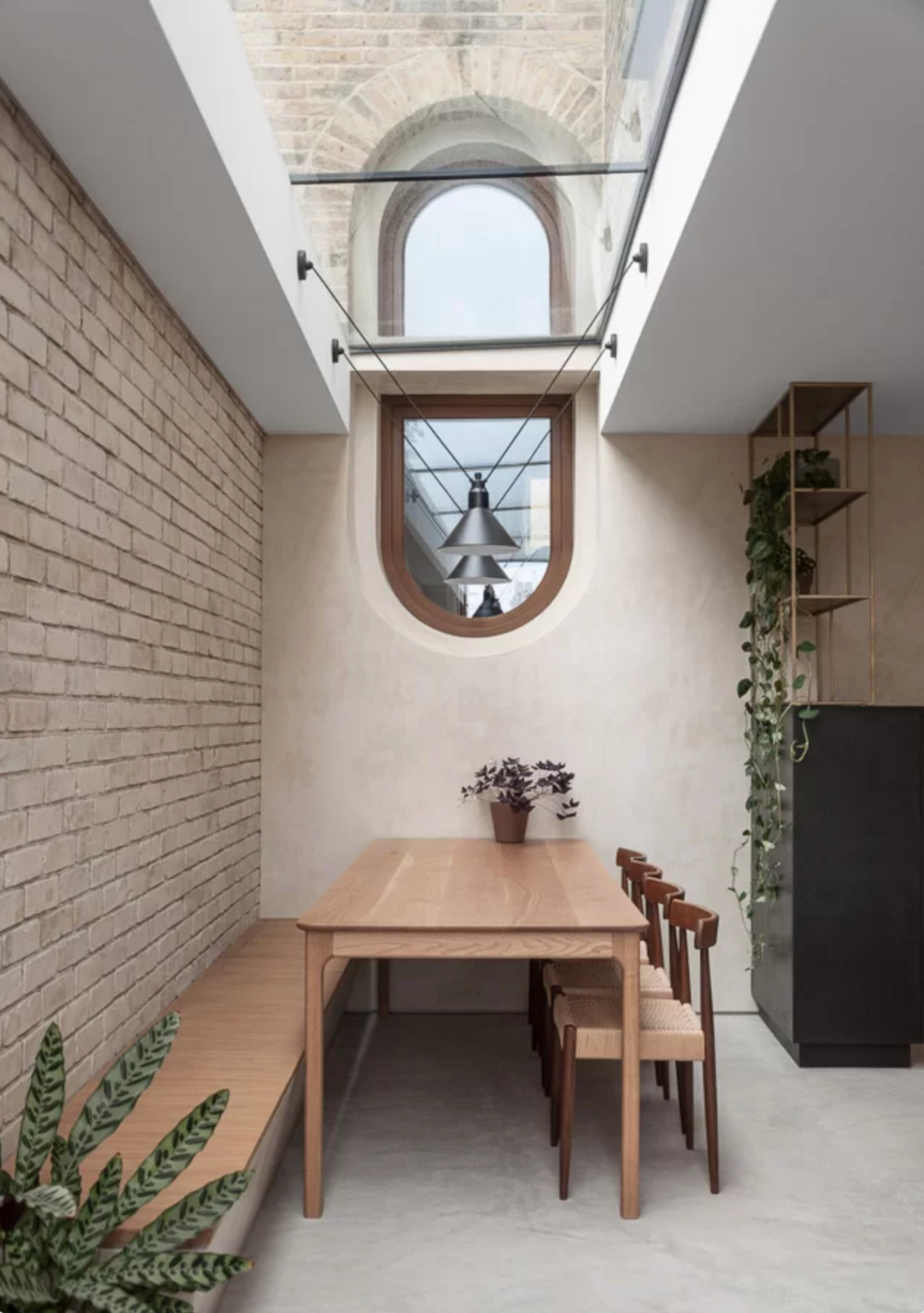
‘Clay plasters are widely regarded as the most sustainable of all interior wall finishes after wood,’ says Clare Whitney of clay plaster experts Clayworks. ‘Readily abundant, easily attainable raw materials are simply blended, with no additives or processing. At the end of life, they are fully compostable.’ Because clay plaster is naturally pigmented, it doesn’t need painting – and it can be manipulated to create silky or heavily textured finishes.
There are some limitations to plaster to bear in mind. ‘Clay plasters are often used in bathrooms due to their moisture absorbing capacity, but they’re not suitable for areas where they may be exposed to standing or still water,’ says Clare Whitney. ‘We don’t recommend them in areas of very high traffic or where they will be exposed to abrasion, impact or spills.’
There are plenty of other types of plaster effect walls to explore, too. Venetian plaster, for example, has a stunning natural appearance but is pricier than alternatives. Tadelakt – also known as Moroccan plaster – is a similarly beautiful material and is waterproof and highly durable, so it’s great for bathrooms and kitchens.
4. High gloss
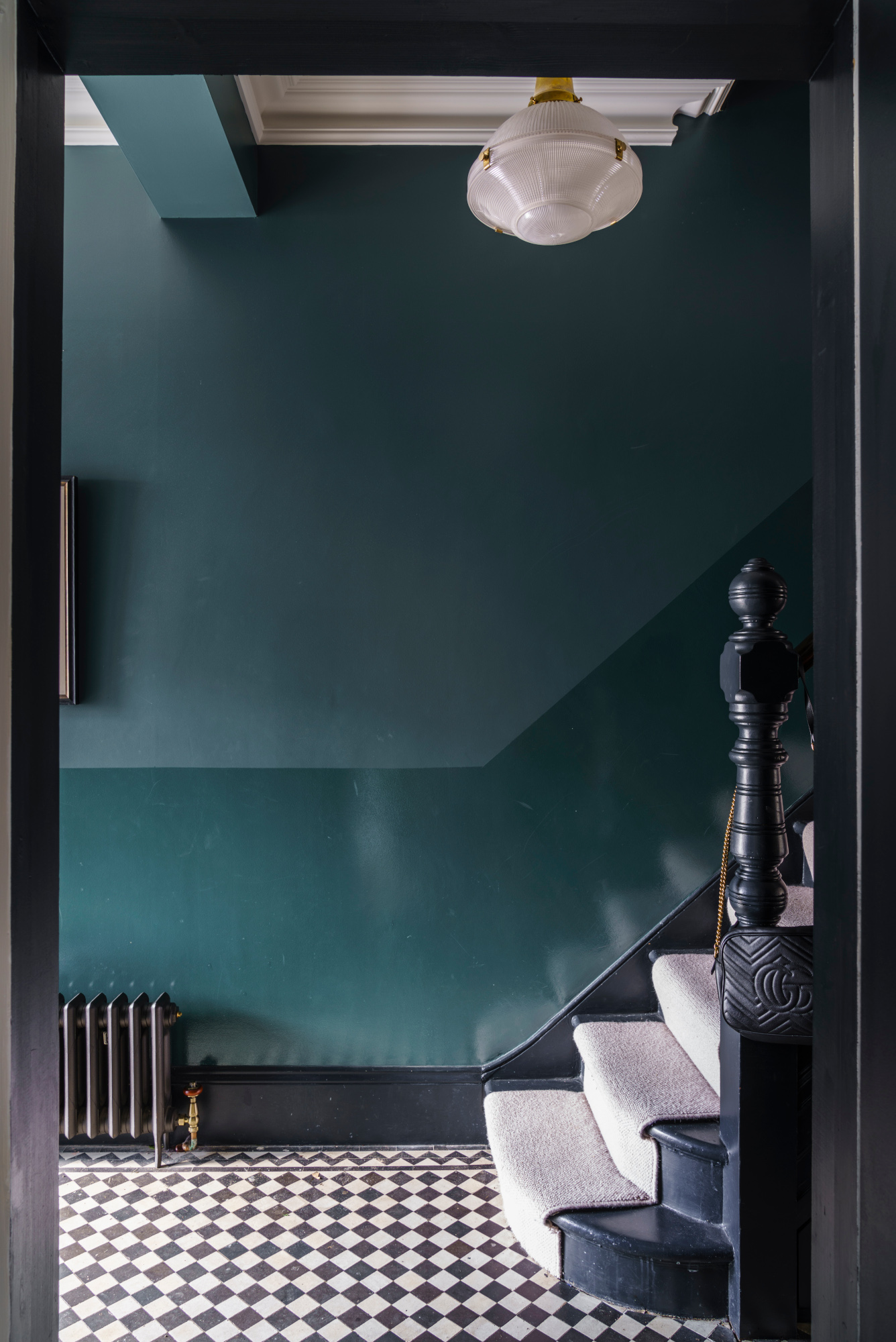
When you think of texture, you might picture a rough-and-ready look – but mirror-effect finishes like high gloss paint bring texture in a different way. If you’re wincing at the very idea of glossy walls, let Patrick O’Donnell of Farrow & Ball convince you. ‘Full gloss has returned, but not as we knew it,’ he says. ‘We’re seeing it used on trims again, in bolder colors than the generic white of bygone days – but the main use has been on walls. It’s a brilliant finish to help bounce light around a space and adds a deep glamor, especially in dark shades.’
‘Glossy walls give interiors an instantly dramatic effect especially when using unexpected bold hues,’ agrees Erika Woelfel, VP of color and creative services at Behr Paint Company. ‘The use of glossy finishes is key to add dimension and shine to walls to architectural features we want to highlight such as trim, moldings, doors, door frames, and ceilings. Glossy wall applications are more commonly done in rooms with perfectly smooth walls and small rooms such as bathrooms, kitchens and walk-in closets where we can better control the lighting and how it will reflect throughout the room. Busy or high traffic areas, such as kids’ rooms, can also benefit from the playful almost lacquer effect and the durability of glossy finishes.’
Concerned about the practicality of applying gloss paint to a wall? ‘As with all paint finishes, there are caveats – one being your walls need to be of the smoothest quality, or you will see every dimple and imperfection,’ says Patrick. ‘The best application method is to spray, so we would definitely recommend a professional application as the color will need to be built up in layers and preferably lightly sanded between each coat.’
5. Wood
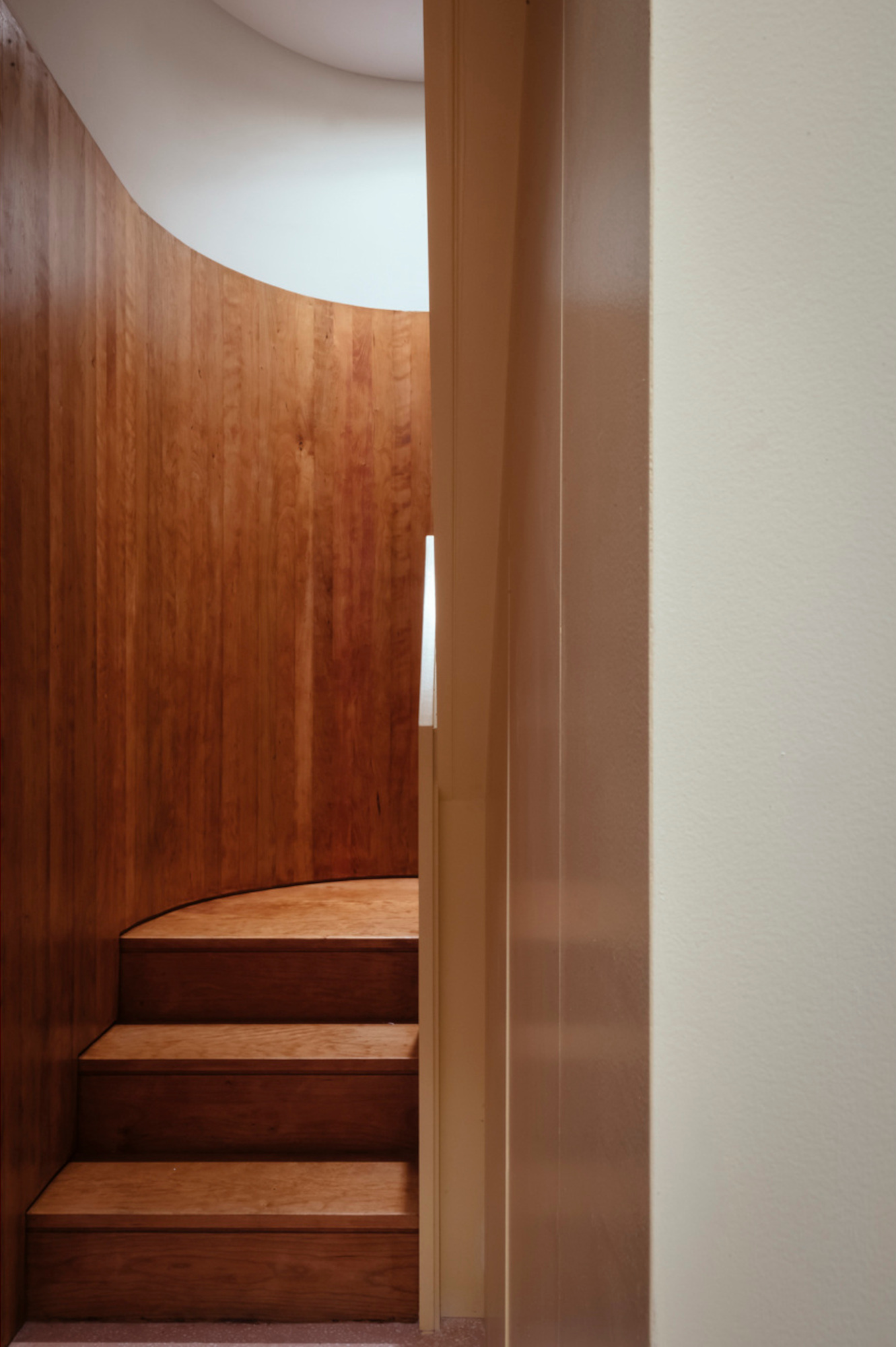
Wood panelling isn’t exactly a new idea – in fact, it’s enjoyed a resurgence in recent years, and you’ll spot it in kitchen extensions, hallways and bedrooms alike. The new take on the trend is to indulge in richer, more luxurious woods – but to exercise restraint while doing so. Gundry + Ducker chose English cherry wood in the stairwell of this project, which links the Victorian ground floor to a modern open-plan layout upstairs. ‘The stairwell space is intentionally rich with the same material on the floor and walls,’ says Christian Ducker. ‘English cherry is a much richer and more interesting material than oak, which can tend towards blandness, but without the heavy feeling of darker hardwoods like American walnut.’ Because of this richness, Christian warns against going overboard: ‘I wouldn’t use a timber this rich in a larger room as it could be overwhelming.’
If you’re opting for a wood accent wall, bear in mind that it requires extra practical considerations. ‘Timber will almost always move over time, so the smaller the staves the smaller the gaps that form between the individual pieces,’ adds Christian. ‘Depending on the amount and its location, timber cladding often has to be specially treated to make it fire resistant. This requires careful selection of the finish coat to avoid a reaction with the fire treatment.’
6. Tiles

No, we’re not talking about kitchen and bathroom tiles. The new way to use tiles for texture is to apply them to unexpected spaces, like a living room, dining room or bedroom. In this project by MW Architects, tiles envelope the dining area of a broken-plan downstairs layout, creating a link to the kitchen on the other side of the space. ‘Internally, the room is intended to feel like a glade that the existing darker rooms focus on,’ says architect and director Matthew Wood. ‘The light is filtered through the fan ribs and reflects on the handcrafted Zellige tiles. The tiles have a unique irregular texture and layered semi transparent glass enamel finish, which give the appearance of dappled light on leaves. The tones of the tiles and the timber floor ensure the space feels warm and inviting.’
'Tiles have excellent applicability outside of just bathrooms and kitchens,' adds Eugene Colberg, principal at Colberg Architecture. 'We have used large monolithic looking tiles or stone tiles in large open portions of the house. Tiles can help make the floor recede in a way that makes texture on a wall appear more bold. Because tiles are monotone, they don’t look like bathroom tiles. If you want to use them on a wall as an accent, you can do something in a smaller format, where it should be rich in texture and color.'
7. Upholstered walls
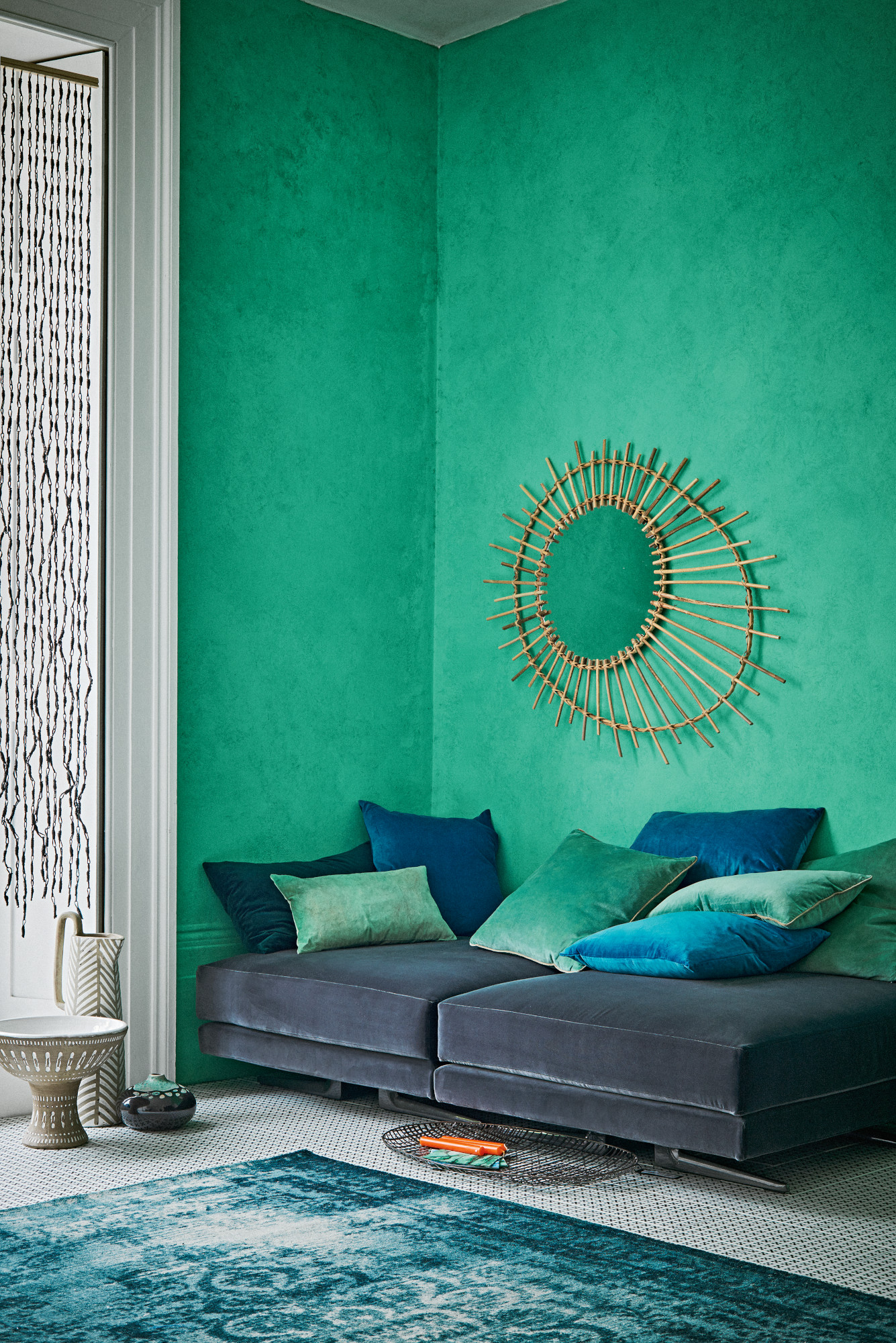
One for the bold and brave, upholstered walls are the ultimate in texture-making. Done in opulent velvet, they add instant luxe to a scheme. Marry your walls with accessories in similar colors or textures, like the cushions in this image – and accent the scheme with a metallic, like gold, for added extravagance.
Needless to say, if you have small children or pets, this might not be the trend for you – instead, replicate the luxe look with a semi-glossy paint in a rich jewel color.
8. Brick
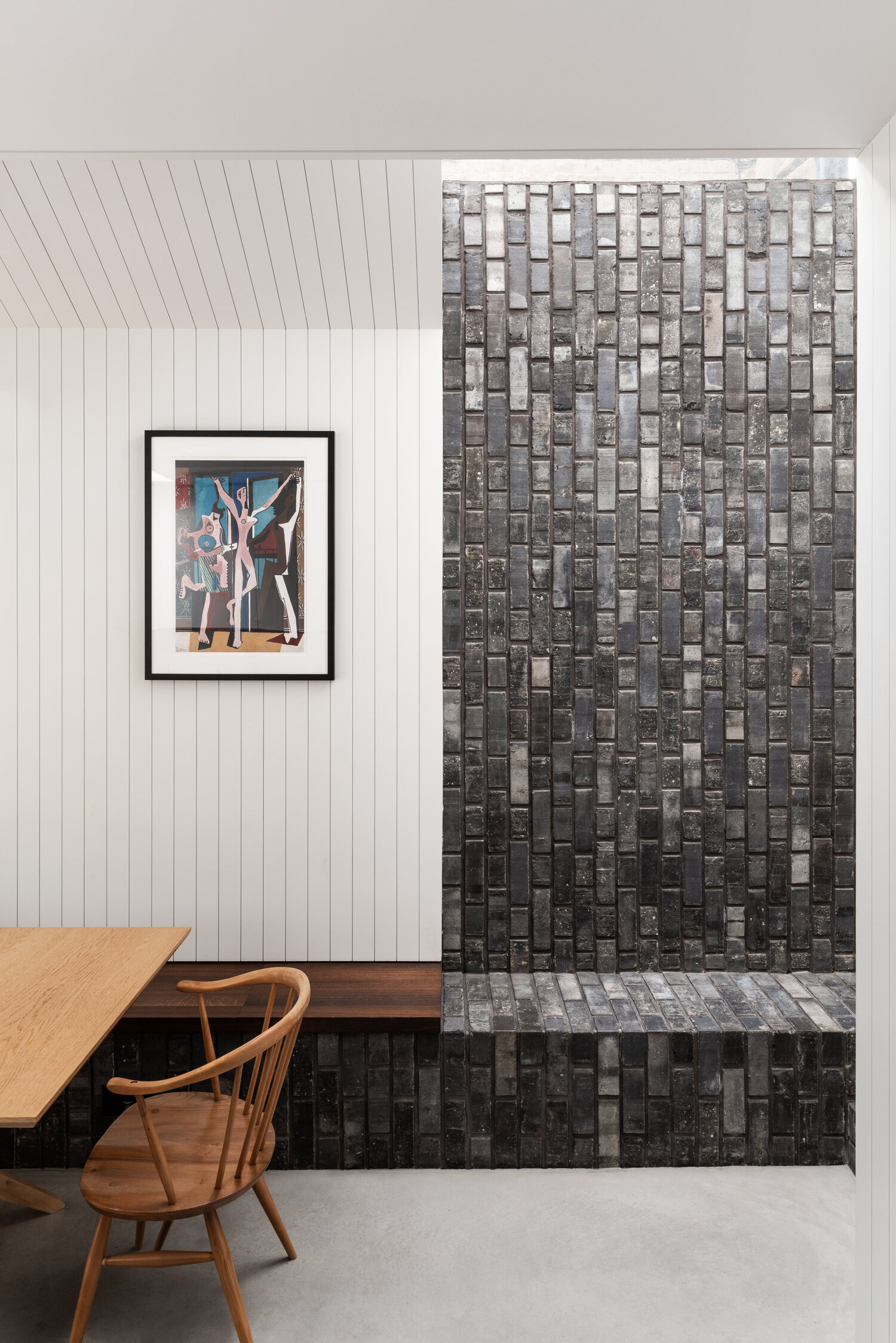
Exposed brick sprung back into fashion when industrial style came to the fore, but the new way with this material is much softer and, well, more unusual. ‘The dark brickwork for this project was selected for its charcoal-like surface qualities,’ says Chris Hawkins, director at Forgeworks. ‘Blemishing and roughness provided the extra visual draw. We actually took the idea of running the same brickwork from outside to inside, starting with low level planters, growing to bench seating and finishing with a climbing feature wall into a concealed skylight.’
However, this wall finish isn’t one for dark living rooms and cosy bedrooms. ‘We find brick best suited to areas with good day lighting, allowing shadowing and strong sunlight to highlight, pattern, color and depth,’ adds Chris. ‘We’d recommend considering how fixtures and fittings will work around them, too. If you need any power or switching on these areas, it usually has to be done via surface mounted kit, which leads to a different aesthetic. We try to avoid this where possible.’
'Exposed brick can be a beautiful feature for a textured wall,' adds Eugene Colberg. 'If you’re using it as a decorating surface, you can’t really go wrong by keeping it natural or lime washing it. If it’s a real exposed brick, like we see in many older buildings, you have to be aware that it’s a natural material, part of the structural system of the building, and you don’t want to put a coat of paint on it because it needs to breath. If it’s an old brick wall you’re leaving exposed, it can be a great visual feature in a room as-is.'
9. Metallic paint
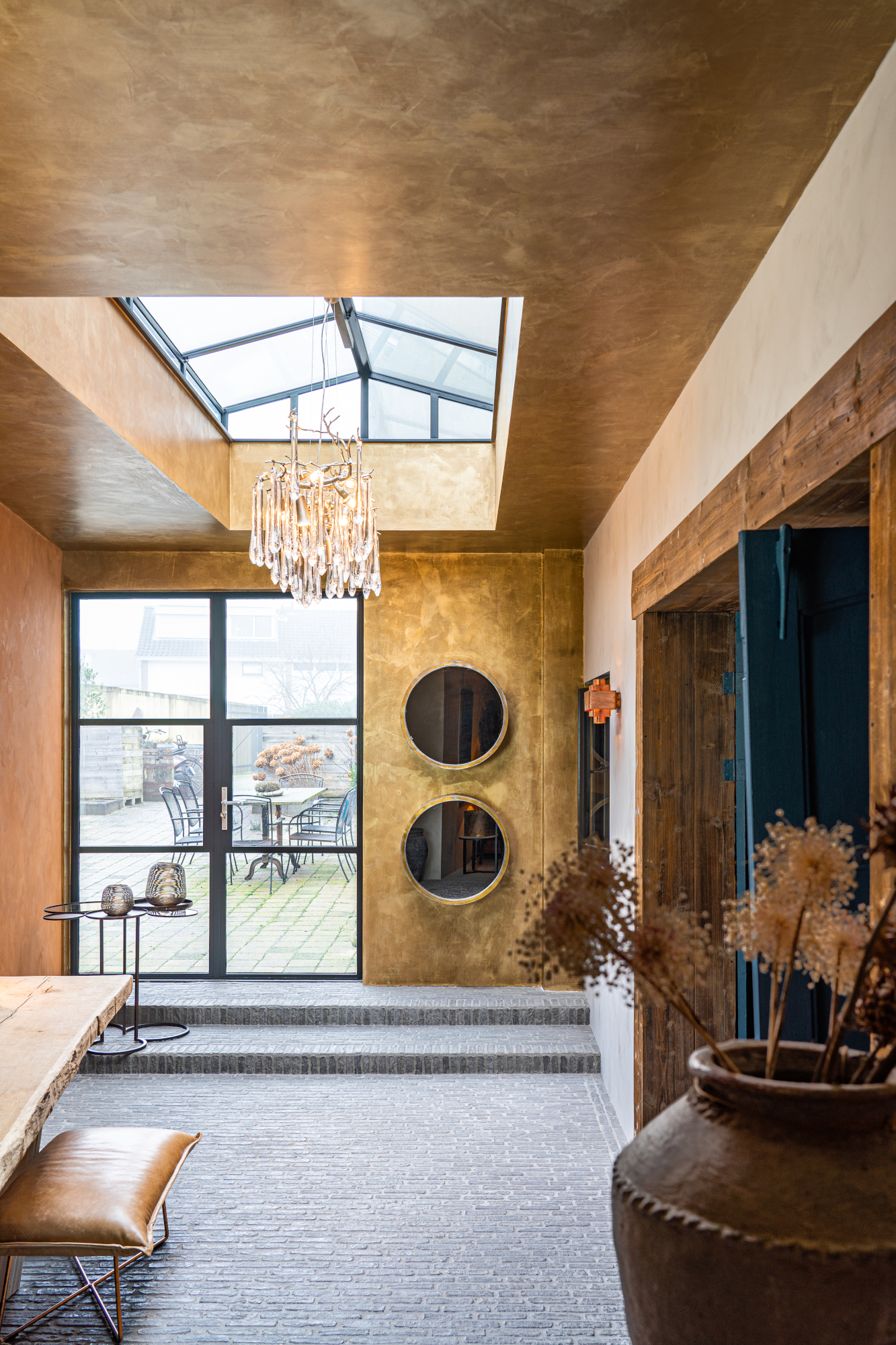
Want to add a bit of pizzazz to your walls? Try a subtle but still special metallic paint. The palette of the moment is gold or brass-effect; warmer than silver, it acts as a neutral and ties in well with woods, neutral shades and soft linens and cottons. Pure & Original recently launched their Elements Collection, which includes the metallic paint used in this project – ‘the perfect finish for that accent wall, hallway, or statement furniture,’ says Helene van Os. ‘Using a trowel to apply the paint adds a special effect to it, with even more impact if applied over Marrakech Walls. A textured metallic!’
Even better, today’s metallic paints come in a more sustainable form. ‘The Element Collection is, like all Pure & Original products, eco-friendly, low VOC and water-based,’ adds Helene. ‘But the paint contains a luxurious, chic, and mysterious shine that gives a unique experience of color from every angle. It fits any style, from classic to contemporary; it all depends on the color and surrounding materials used.’
What's the best textured wall finish for high traffic areas?
Top of the list in high-traffic areas like a hallway are durability and easy-clean. That can rule out certain wall finishes, like some plasters. ‘I would probably limit the use of clay plaster to low-traffic areas like bedrooms and sitting rooms, as clay can get marked or damaged if something scrapes it,’ says Louis Hagen Hall. Having said that, it’s very easy to repair.’
Instead, turn towards paint – particularly high-gloss paint, which is more durable than its lower-gloss counterparts and is therefore great for kids’ rooms, too. ‘Creating a full gloss half height design in a hallway, in the same color as the upper or in a contrasting color, is ideal for busy households,’ says Patrick O’Donnell of Farrow & Ball.
Alternatively, look to wallpaper to get your fix of texture. ‘Grasscloth wallcoverings are so versatile that they are perfect for any room in the home,’ says Philippe Desart of Arte. ‘The inherent woven strength makes them an ideal choice for high traffic areas such as hallways, where they’re less likely to be damaged by the knocks and bumps of daily life.’ Our hallway wallpaper ideas gallery has plenty more inspiration.
What's the best textured wall finish for kitchens and bathrooms?
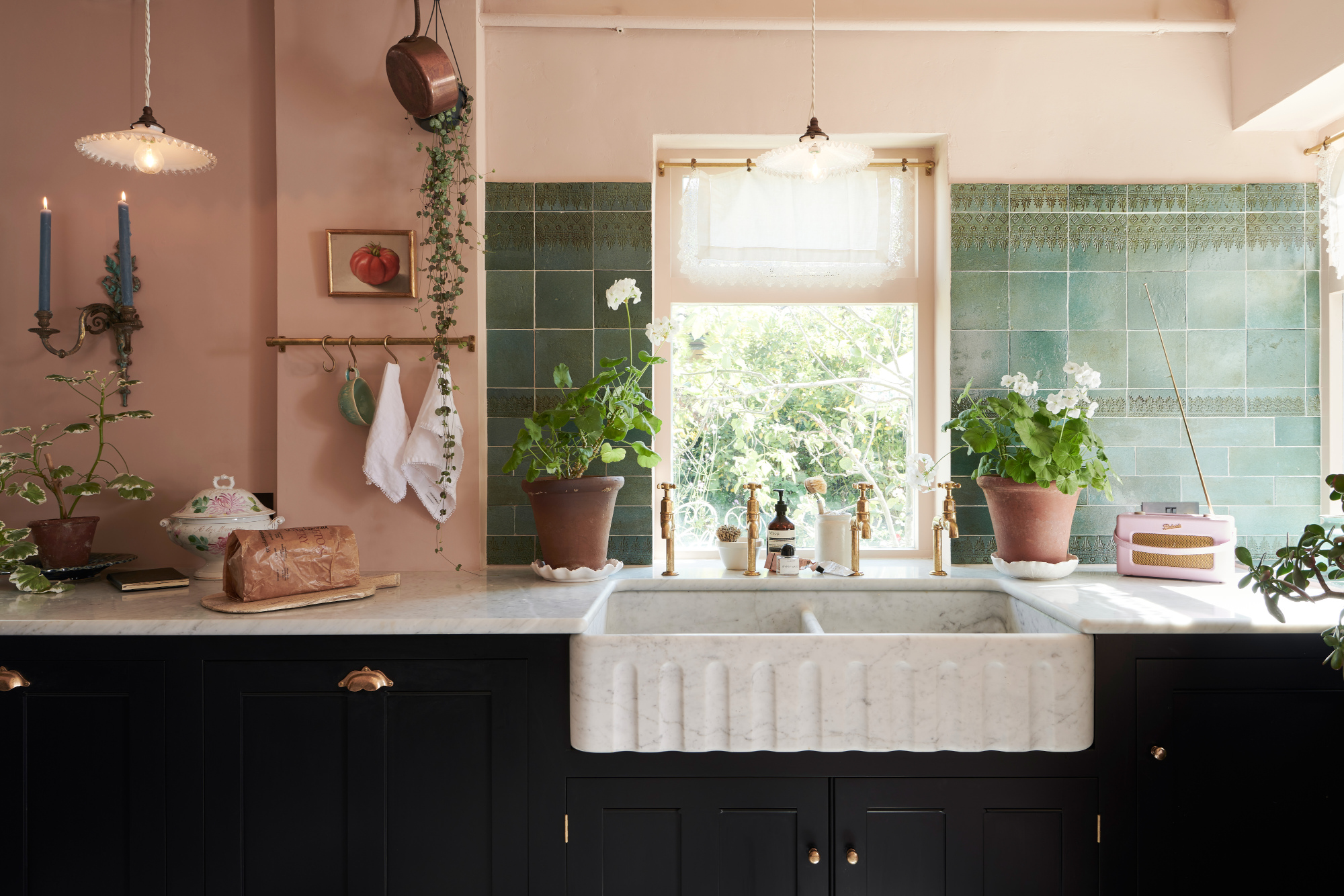
'Tiles, like wallpaper, are a great way to add texture, color and pattern to large areas of a room,’ says Helen Parker, creative director at deVOL. ‘We love to expand the tiled areas away from just the cooking area and make feature walls. Tiling up to the ceiling and down to the floor and even behind glazed cupboards has much more impact. It’s always nice to try and avoid having an area of tiles that just stops short of a corner; the sides of tiles can be difficult to obscure in an attractive way so covering whole walls avoids this problem.'
Plaster, as discussed above, can also work well for wetter areas, within reason. ‘Venetian plaster lends itself exceptionally well to wet areas, i.e. bathrooms, showers, and kitchens,’ says Emily Williams of Z Properties. ‘It adds depth and durability to walls, and we also love to add Mica powder to give it an extra sparkle.’ Wallpaper shouldn’t be the first port of call for these rooms, but if you’re set on using grasscloth in your kitchen, there are options, she adds: ‘Fabric and grasscloth don’t lend themselves well to wet areas, but in that instance, you can use a lacquered grasscloth, which gives even more glow and dimension.’
Alternatively, look to new technologies and products that are developed to withstand these sort of environments. ‘There could be some limitations with incorporating textured wall coverings in wet environments like showers,’ says Alex Adducci of 210 Design House. ‘Luckily, brands like Wall&decó — which we work with often as a brand partner of 210 — offer wet environment-friendly wall coverings that look textured but have a patented waterproofing sheath for those who still want the look.’
Be The First To Know
The Livingetc newsletters are your inside source for what’s shaping interiors now - and what’s next. Discover trend forecasts, smart style ideas, and curated shopping inspiration that brings design to life. Subscribe today and stay ahead of the curve.

Ellen is deputy editor of Livingetc magazine. She works with our fabulous art and production teams to publish the monthly print title, which features the most inspiring homes around the globe, interviews with leading designers, reporting on the hottest trends, and shopping edits of the best new pieces to refresh your space. Before Livingetc she was deputy editor at Real Homes, and has also written for titles including Homes & Gardens and Gardeningetc. Being surrounded by so much inspiration makes it tricky to decide what to do first in her own flat – a pretty nice problem to have, really. In her spare time, Ellen can be found pottering around in her balcony garden, reading her way through her overstacked bookshelf or planning her next holiday.
-
 Turns Out the Coolest New Café is Actually In Your Kitchen — Here's How to Steal the Style of TikTok's Latest Trend
Turns Out the Coolest New Café is Actually In Your Kitchen — Here's How to Steal the Style of TikTok's Latest TrendGoodbye, over-priced lattes. Hello, home-brewed coffee with friends. TikTok's 'Home Cafe' trend brings stylish cafe culture into the comfort of your own home
By Devin Toolen Published
-
 5 Bathroom Layouts That Look Dated in 2025 — Plus the Alternatives Designers Use Instead for a More Contemporary Space
5 Bathroom Layouts That Look Dated in 2025 — Plus the Alternatives Designers Use Instead for a More Contemporary SpaceFor a bathroom that feels in line with the times, avoid these layouts and be more intentional with the placement and positioning of your features and fixtures
By Lilith Hudson Published